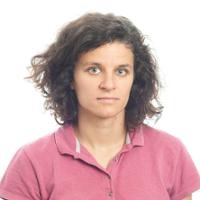Main Menu (Mobile)- Block
- Overview
-
Support Teams
- Overview
- Anatomy and Histology
- Cryo-Electron Microscopy
- Electron Microscopy
- Flow Cytometry
- Gene Targeting and Transgenics
- High Performance Computing
- Immortalized Cell Line Culture
- Integrative Imaging
- Invertebrate Shared Resource
- Janelia Experimental Technology
- Mass Spectrometry
- Media Prep
- Molecular Genomics
- Primary & iPS Cell Culture
- Project Pipeline Support
- Project Technical Resources
- Quantitative Genomics
- Scientific Computing
- Viral Tools
- Vivarium
- Open Science
- You + Janelia
- About Us
Main Menu - Block
- Overview
- Anatomy and Histology
- Cryo-Electron Microscopy
- Electron Microscopy
- Flow Cytometry
- Gene Targeting and Transgenics
- High Performance Computing
- Immortalized Cell Line Culture
- Integrative Imaging
- Invertebrate Shared Resource
- Janelia Experimental Technology
- Mass Spectrometry
- Media Prep
- Molecular Genomics
- Primary & iPS Cell Culture
- Project Pipeline Support
- Project Technical Resources
- Quantitative Genomics
- Scientific Computing
- Viral Tools
- Vivarium

Biography
I have a Bachelor's degree in physics and mathematics, as well as a Master's degree in physics from ETH Zurich, where I described Levy flights in quantum dots with Atac Imamoglu. I then completed my PhD in theoretical physics at Yale University with Nick Read. During my PhD, I studied a variety of topics including solids, membranes, and spin glasses, usually through the lens of geometry and topology.
Like many other physicists, my first introduction to neuroscience was through the Hopfield model (a spin glass model). Now I am fascinated by the question of how we perceive three dimensions even though our retinal inputs are only two-dimensional. In particular, I am wondering how our brain processes monocular depth cues (e.g. texture gradients, perspective lines, motion parallax).
At Janelia, I collaborate with the Pachitariu lab to study population responses of visual neurons in mice to slanted, textured, flat walls. We find evidence that, as walls rotate in three-dimensional space, population responses rotate in a higher-dimensional space, independent of the texture on the wall.
I am working with the Reiser lab to study visual processing in the fly. Using a 3D reconstructed fly brain from electron microscopy slices, we recently started to categorize visual neurons into different cell-types and formulate hypothesis about their computations based on the neurons’ morphology and connectivity.
